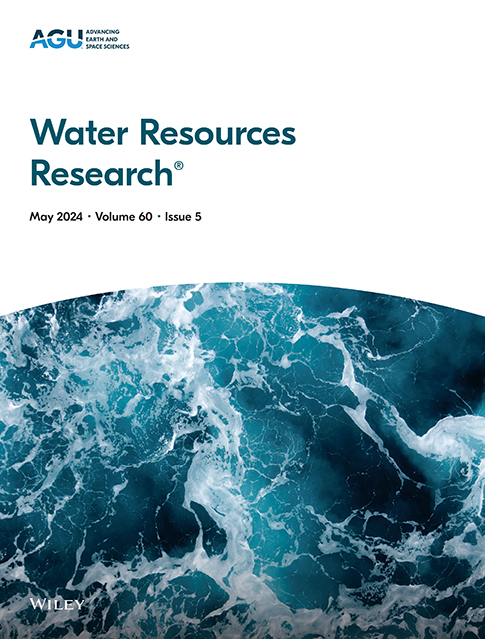Channel Morphological Characteristics and Morphodynamic Processes of Large Braided Rivers in Response to Climate-Driven Water and Sediment Flux Change in the Qinghai-Tibet Plateau
IF 5
1区 地球科学
Q2 ENVIRONMENTAL SCIENCES
引用次数: 0
Abstract
With rising air temperature and precipitation, water and sediment fluxes in the Source Region of the Yangtze River (SRYR) have increased since 2000s. Nonetheless, the response of braided river morphology to climate-driven water and sediment flux change is still unknown. Water bodies of 9 large braided rivers from 1990 to 2020 were extracted based on Google Earth Engine platform, and impacts of climate change on morphological indices and morphodynamic processes were quantified. A new segmentation method is presented to more precisely extract braided river water body when the branch width is less than an image pixel size. The warming and wetting trend led to vegetation cover increase. With the increase of water flux, the water area of each braided reach has increased in both flood and non-flood season. The 3–5 years mean annual erosion and accretion intensity (newly proposed in this study) of the channel shows three different trends of increasing, weakening, and unchanged over time. These three trends can be classified into three patterns in response to climate-change driven water and sediment flux change in the SRYR as follows: sediment increase constrained pattern (weakening or unchanged), sediment increase dominated pattern (increasing), and water increase dominated pattern (increasing or unchanged). In summary, the braided rivers in the SRYR showing consistent increasing of water area, general expansion of active channel, and increasing of erosion and accretion intensity for some of the rivers, with the climate-driven increasing water and sediment flux.青藏高原大型辫状河流的河道形态特征及形态动力过程与气候驱动的水沙通量变化的关系
自 2000 年代以来,随着气温和降水量的增加,长江源区的水沙通量也在增加。然而,辫状河流形态对气候驱动的水沙通量变化的响应仍然未知。基于谷歌地球引擎平台,提取了 1990-2020 年 9 条大型辫状河流的水体,并量化了气候变化对形态指数和形态动力学过程的影响。提出了一种新的分割方法,可在分支宽度小于图像像素尺寸时更精确地提取辫状河水体。暖湿化趋势导致植被覆盖增加。随着水流量的增加,各辫状河段的水域面积在汛期和非汛期均有所增加。河道的 3-5 年平均年侵蚀和吸积强度(本研究新提出)随着时间的推移呈现出增加、减弱和不变的三种不同趋势。这三种趋势可划分为以下三种模式,以应对气候变化驱动的南亚河流水沙通量变化:泥沙增加受限模式(减弱或不变)、泥沙增加主导模式(增加)和水量增加主导模式(增加或不变)。总之,随着气候导致的水量和泥沙通量的增加,SRYR 中的辫状河呈现出水域面积持续增加、活动河道普遍扩大、部分河流的侵蚀和吸积强度增加等特征。
本文章由计算机程序翻译,如有差异,请以英文原文为准。
求助全文
约1分钟内获得全文
求助全文
来源期刊

Water Resources Research
环境科学-湖沼学
CiteScore
8.80
自引率
13.00%
发文量
599
审稿时长
3.5 months
期刊介绍:
Water Resources Research (WRR) is an interdisciplinary journal that focuses on hydrology and water resources. It publishes original research in the natural and social sciences of water. It emphasizes the role of water in the Earth system, including physical, chemical, biological, and ecological processes in water resources research and management, including social, policy, and public health implications. It encompasses observational, experimental, theoretical, analytical, numerical, and data-driven approaches that advance the science of water and its management. Submissions are evaluated for their novelty, accuracy, significance, and broader implications of the findings.
 求助内容:
求助内容: 应助结果提醒方式:
应助结果提醒方式:


